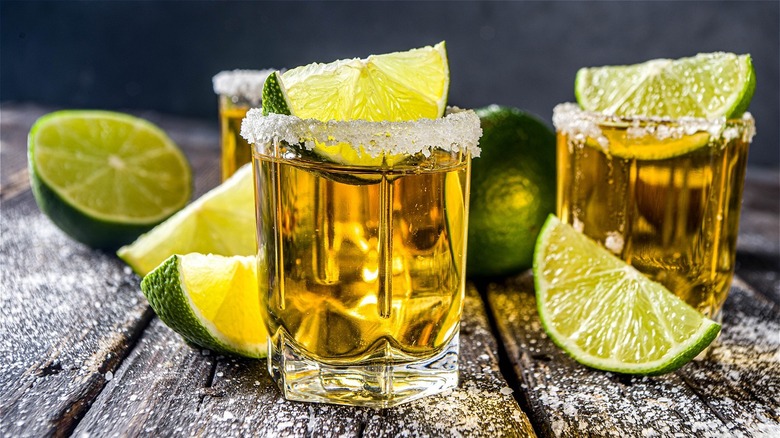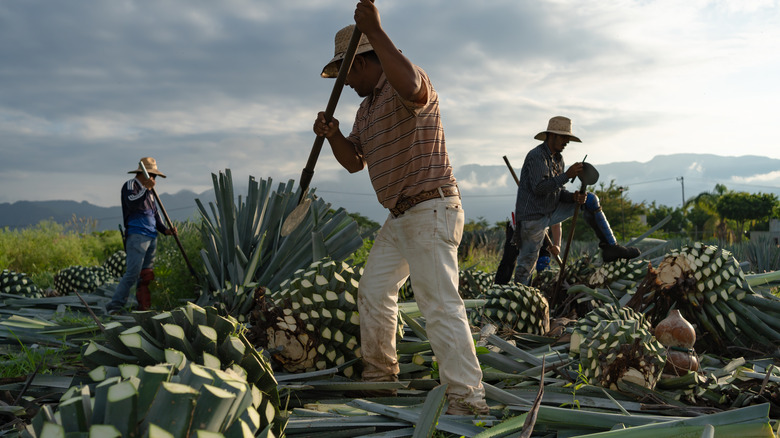How Tequila Is Actually Made
One of the crown jewels of Mexican culture is the country's creation of the world's best tequila. The smooth, sharp, sometimes smoky liquor is quickly becoming one of America's favorite spirits to indulge in, too. In 2022, the U.S. Distilled Spirits Council reported that tequila and mezcal were the second fastest growing spirits category based on revenue, totaling a whopping $6 billion in sales.
Tequila has been around forever, dating back to the ancient Aztecs, who began fermenting agave plants to create the ceremonial drink, pulque, around 200 A.D. After the Spanish conquistadors introduced the process of distillation to the Aztecs, it was eventually mass-produced in the 1600's. Today, only five states in Mexico are lawfully permitted to produce tequila, and it's a fascinating process that is often described as a true labor of love.
Tequila is made from the Weber blue agave plant, which is native to Mexico. These giant succulents can take up to seven years to fully mature and are harvested by jimadors. The plant's spiky fronds are removed with a sharpened coa, or hoe, until only the juicy core remains. Named for its pineapple-like shape, the piña bulbs are truly massive and can sometimes weigh as much as 300 pounds. The next step on their journey involves getting carted off to have their sugars extracted via the baking process. Normally, this would be done in a clay or brick oven, but for large distilleries like El Tequileño, huge machinery is needed to get the job done.
After cooking, the agave must be juiced, fermented, and distilled
Autoclaves are the modern approach to baking agave cores at high temperatures for tequila-making, and they're also much easier to clean than traditional hornos. After being chopped up, the piñas are tossed into these enormous steam-cooking drums for 24 hours, emerging sticky with sap.
@foodnetwork so THAT'S how tequila is made! 📍@eltequileno
Next, it's time to shred the baked piña to squeeze out all that sweet sugar, called aguamiel, or "honey water". Its fuzzy-looking remains get strained into a large, stainless steel vat before being mixed with yeast and water. Yeast is actually a naturally occurring growth on agave plants, but factories tend to add in cultivated yeast instead, giving the fermentation process enough to work with. In around seven to 12 days, the alcohol must then be distilled and concentrated, removing its water content in the process. Tequila undergoes this process twice before it gets transferred into barrels so the aging process can begin.
What type of tequila should you sip on in your margarita? You can actually tell how it's been aged based on color. Blanco tequila is clear and only aged for a week or so, while Mexico's favorite, reposado, is aged in bourbon barrels for over two months. Añejos (vintage) tequilas have the darkest color, having aged for a minimum of one year. Distilleries will bottle, package, and label their final product by hand before shipping it around the world. This detailed process, steeped in tradition, is one every tequila lover can raise a glass to.

